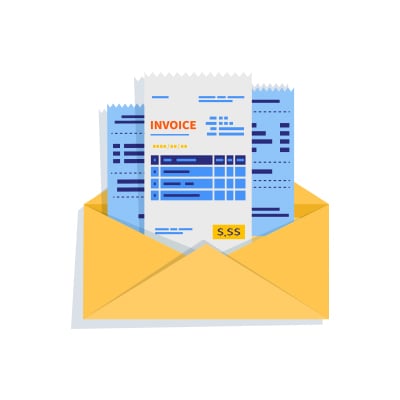12 Ways to Increase Cash Flow Throughout the Project Life Cycle
Cash flow is often a make or break factor for a business. We have outlined 12 opportunities to increase your cash flow, ranging from billing to...
Small businesses spend 120 days a year on admin. These 15 work productivity tips will help you start increasing manpower and decreasing costs.
What could you do with an extra 120 days a year?
 According to this Sweating the Small Stuff report, a study that was carried out with 3000 SMEs across 11 countries, small businesses spend an average of 120 days a year on admin.
According to this Sweating the Small Stuff report, a study that was carried out with 3000 SMEs across 11 countries, small businesses spend an average of 120 days a year on admin.
No one starts a business because they dreamed of creating expense reports or chasing down late payments. While a certain amount of paperwork, accounting, and recruiting is essential to keep your business running, administrative overhead distracts you from the real, valuable work of growing your business.
Just imagine – if you could redirect some of those 120 hours spent on basic administrative tasks back into attracting customers, growing revenue, or mentoring your employees, the positive impact on your business would be monumental.
If you’re like most SMEs, you spend a considerable amount of time and money on administrative tasks. Here are 15 work productivity tips for small businesses to help increase your manpower that can be used for output production and decrease your operating costs.
71% of the time businesses dedicate to admin is taken up by accounting and payment processing tasks, including issuing invoices and chasing payments, according to research by Sage.
Manually managing bills and invoices wastes time and exposes you to input errors, forgotten invoices, and other costly mistakes. Stop wasting time on archaic invoicing processes and switch to digital processes.
While issuing invoices is unavoidable, manually issuing them is not. There are many software solutions that assist businesses with digital invoicing (Related: Online Invoicing and Payment Software: Good for Cash Flow, Great for Customers).
Convenient billing methods like automatic and progress billing reduce the time you need to spend thinking about invoicing. Plus, features such as sending multiple invoices in a single email and batch billing can help you double your output without increasing labor.
There’s no reason why you or your team should have to issue an invoice from your office. Have your field staff issue invoices on-site via your accounting app. Build this requirement into your sales or field staff’s processes so that it’s one less thing you have to think about.
Issuing an electronic invoice can take minutes. And when it’s done on-site, in front of the client or customers, there’s no haggling later about whether the invoice was received. This also means that billing isn’t delayed, which can create confusion (and more delays) with the client.
Any robust practice management software should also include a mobile app.
Delegating as many tasks as possible that don’t require experience or expertise is a fundamental labor-saving trick.
Imagine you only have 4 hours for work today. What are the most important tasks that you will do within those four hours? Any tasks that fall outside of those 4 hours, delegate to someone else.
Do you really need to be the person chasing down that invoice? Probably not. Identify these opportunities and focus on the tasks wherein you can maximize your impact and potential.
The better estimates you create, the less time you’ll spend invoicing. Ensuring your field staff puts in the work upfront to create correct and detailed estimates will save you time down the line.
 If an estimate is perfect, all you have to do is switch it over from estimate to invoice in your accounting software when you bill the client. Or, at the very most, it’ll be easy to copy and paste the details from the estimate to the invoice form.
If an estimate is perfect, all you have to do is switch it over from estimate to invoice in your accounting software when you bill the client. Or, at the very most, it’ll be easy to copy and paste the details from the estimate to the invoice form.
Not only does this save you manual entry time, but accurate estimates upfront will also reduce discussion with clients about payment down the line (Related: How to Fix the 3 Most Common Causes of Budget Overruns).
It’s easy to fall into the trap of building your daily schedule around fixing issues that arise quickly. But in order to get free time to be more productive, you must take control of your working schedule. An easy way to do this is by bunching identical tasks together on a daily or weekly basis.
If you typically spend several hours a day chasing down payments, designate a time within your day specifically for this task. When someone asks you about payments, you can let them know you’ll have an answer by the end of the day, and add it to the list for your payment-chasing part of your day.
When you stop switching between tasks, it’s easier to focus on the task at hand. And as a result, your efficiency increases.
As you start to bunch tasks together, you’ll realize how long certain tasks take you. For example, you might notice that you can review three proposals within one hour.
So why not try to review four proposals within one hour? Be competitive with yourself and see how much further you can push your productivity. Consider rewarding yourself if you win the race against your own work rate.
Your workload will vary and this technique won’t always be feasible. But it’s a good opportunity to practice self-measurement and get a better understanding of how you work. As you notice patterns in your workflow, you might be inspired to do things differently.
“Chunking” describes how human memory utilization works. Imagine you’re on the phone when someone walks into your office. They ask you a quick question, so you stop listening to the person on the phone, give a response, and then go back to your phone call. In this sequence you did three things: started the phone call, had the in-person conversation, and then resumed the phone call.
Had you done one task after the other, you could have gotten both of them done better in less total time. That’s because as you begin each task, you have to focus on it to get started. The more starts and stops you have during the day, the more time-consuming start-up moments you have.
Try breaking your day up into larger chunks instead of multitasking throughout the day. You won’t spend as much time in start-up moments and, as a result, your efficiency will improve. You’ll have more time, will get more done, and will be able to focus on the single task at hand.
The 2-minute rule is a strategy for stopping procrastination. The goal is to make it easier for you to get started on the things you should be doing.
There are two parts to this rule:
This strategy works for any goal because of one simple reason: the physics of real life.
Automations can save you incredible amounts of time by reducing the basic, repetitive tasks you perform daily.
Most accounting software solutions have automations built in. Coupled with machine learning, these once basic automations are becoming increasingly powerful. Spend time investigating and learning how to use automations upfront (Related: 3 Areas of Your Business That Need to Be Automated).
 Getting the most amount of work done in the least amount of time possible is the most efficient way to make a profit. The most important asset for a firm owner is time. Every second of time that you spend working is valuable. Automations is one of the easiest ways to increase your output without adding anything to your input.
Getting the most amount of work done in the least amount of time possible is the most efficient way to make a profit. The most important asset for a firm owner is time. Every second of time that you spend working is valuable. Automations is one of the easiest ways to increase your output without adding anything to your input.
With the wide adoption of cloud-based applications, it’s easier than ever for software updates to reach customers. While easier updates are great for customers and providers alike, a disconnect remains between having the updates and actually using the new features.
New features are typically added to help you save time and resources. It’s easy to ignore the feature update emails and notifications, but a moment spent seeing what’s new could save you hours down the line.
Next time there is an email, webinar or notification about new features, take the time to explore the benefits they could have at your company.
Studies have shown that flexible working hours increase productivity and overall company profitability. Some people work well early in the morning, while others are most productive in the evening. Try a new work schedule to see when you are most productive and consider a policy allowing all members of your firm to work when they’re most productive.
This is a great trick for those who find themselves pestered by emails, messages and phone calls during the workday. Starting your day at 7 am can give you several hours of focused productivity before the onslaught of notifications begins.
Emails are becoming increasingly invasive in our working lives. They’re a randomly occurring annoyance that can be very difficult to ignore.
Consider closing your email program, even if just for an hour a day. While ignoring your email may seem crazy, when you stop getting distracted by constant notifications your productivity will skyrocket.
If it’s hard to exit email for a short period, you could consider removing all email programs from your computer or phone and only using the website interface to handle emails. Email programs nowadays also include features such as Focused Inbox, which can sort emails into messages you should respond to and those with lower priority.
Basic tasks eat time, often for little reward. Any basic task that is repetitive but can’t be automated is a great candidate for outsourcing.
Maybe you need to produce a sample report for prospects. Instead of stripping the information yourself, you can create a standard operating procedure (SOP) and outsource the task to a freelancer.
Not only does this free up your time to focus on more important tasks, but outsourcing basic tasks can also save your firm money. If it takes you an hour to write a blog post, that might cost $300, whereas you can outsource a simple blog post on UpWork for as little as $20.
You should frequently review any task that is dependent on third-party input.
If you’re sending an invoice to somebody who left the company years ago, that inbox is probably only checked by someone else periodically. This creates a long delay. But if you frequently check to make sure you’re sending invoices to the right people, this won’t happen.
You don’t need to make this review a separate task. Instead, tag it onto any existing communications you might have. Simply ask at the end if the person you are invoicing is still the right person for you to deal with.
Meetings can eat up an incredible amount of time, often for little reward.
Swapping out a regular meeting for a stand up meeting can boost your meeting efficiency. Few people like standing for long periods. So, in a stand up meeting, attendees are inherently encouraged to cover topics efficiently. Simply calling your meeting a “stand up” meeting in the invite can help send a signal to participants that you’re aiming for an efficient, concise meeting.
Taking control of your time requires some upfront effort but the rewards are well worth it in the long run.
While efficient admin can help your firm in many ways, it’s always a good idea to continually reassess and improve your processes. Are you making mistakes that are hurting your projects’ efficiency and profitability? Click below to download our eBook on fatal project management mistakes and how to prevent them.
Want more tips to increase efficiency and improve your bottom line? Click below to download a free eBook on 10 Fatal Project Management Mistakes and How to Prevent Them.
BQE University is a hub of brilliant thought leaders in the architecture, engineering, and professional services industry. Each article offers a unique approach to education that emphasizes the importance of developing a business-thinking mindset for your firm. Their valuable knowledge and insights helps transform your business from a mere service provider to a thriving organization that consistently delivers projects that satisfy clients and generate profits. By learning from the experts at BQE, you can build a better firm and achieve your professional goals.
Cash flow is often a make or break factor for a business. We have outlined 12 opportunities to increase your cash flow, ranging from billing to...
Learn best practices to improve invoicing, speed up payments, and boost cash flow. Includes a free Client Onboarding Checklist to help you start...
Learn tips to remain profitable and ensure business success through an economic downturn by preparing a smart business strategy during a recession.
Be the first to know the latest insights from experts in your industry to help you master project management and deliver projects that yield delighted clients and predictable profits.